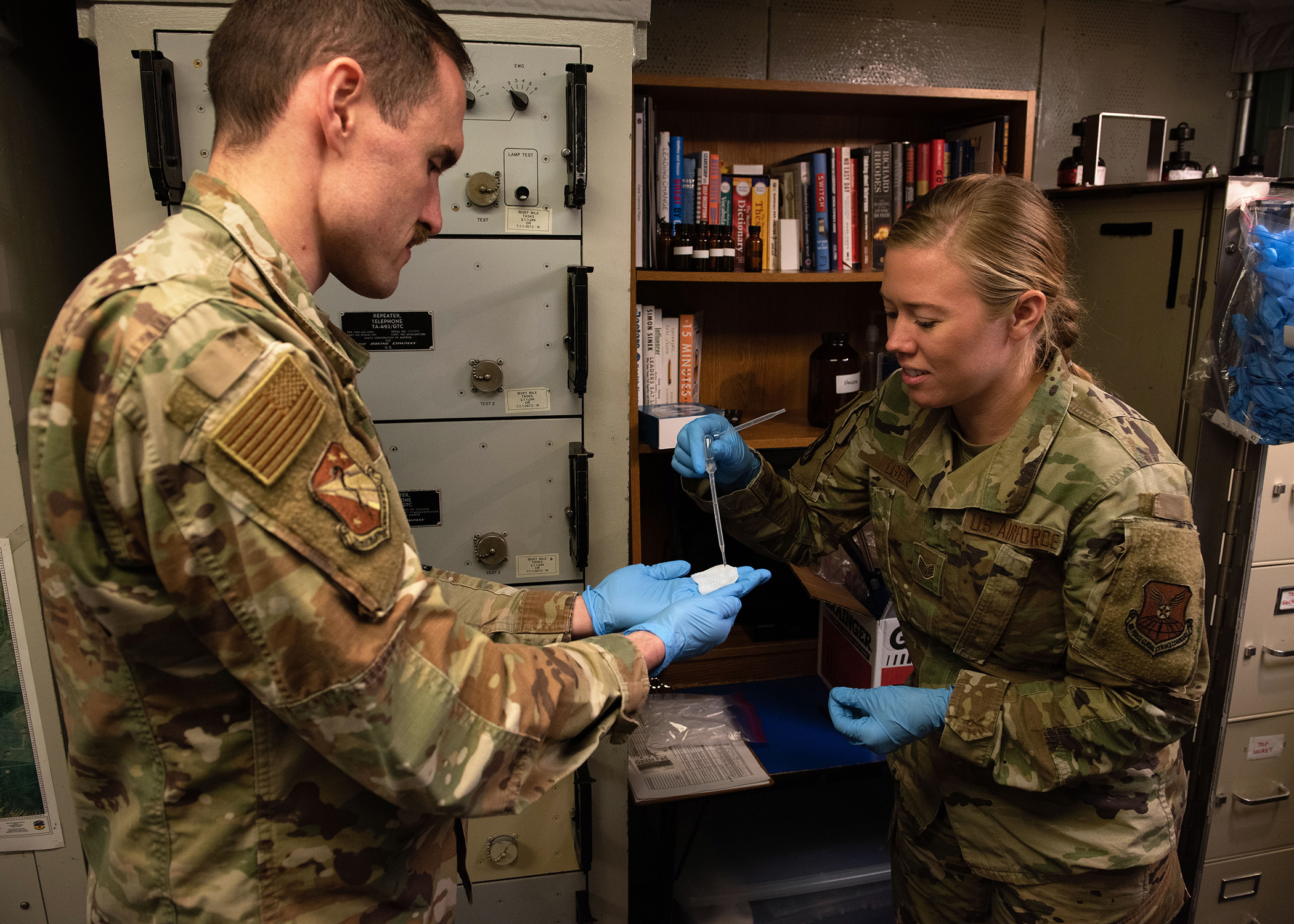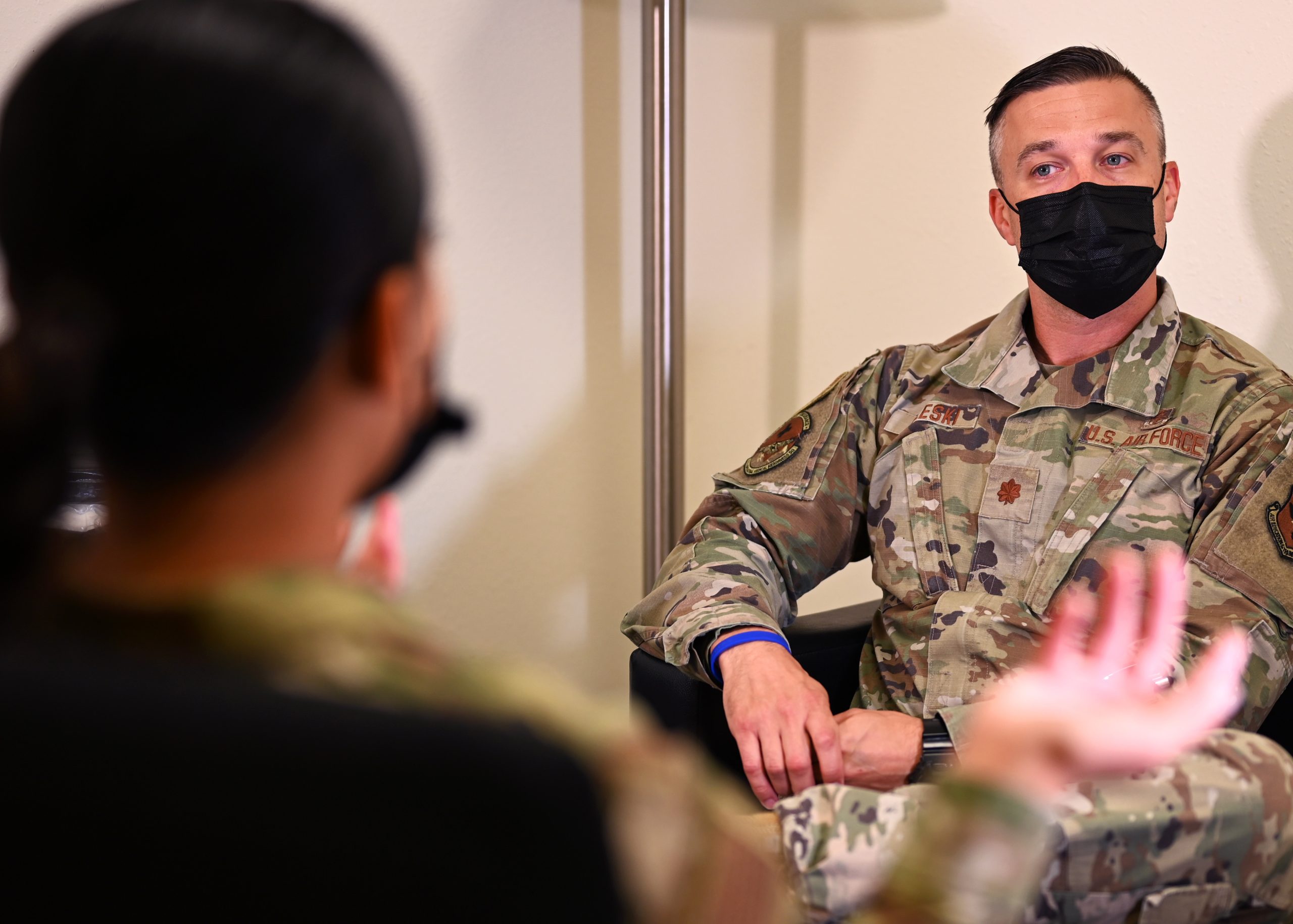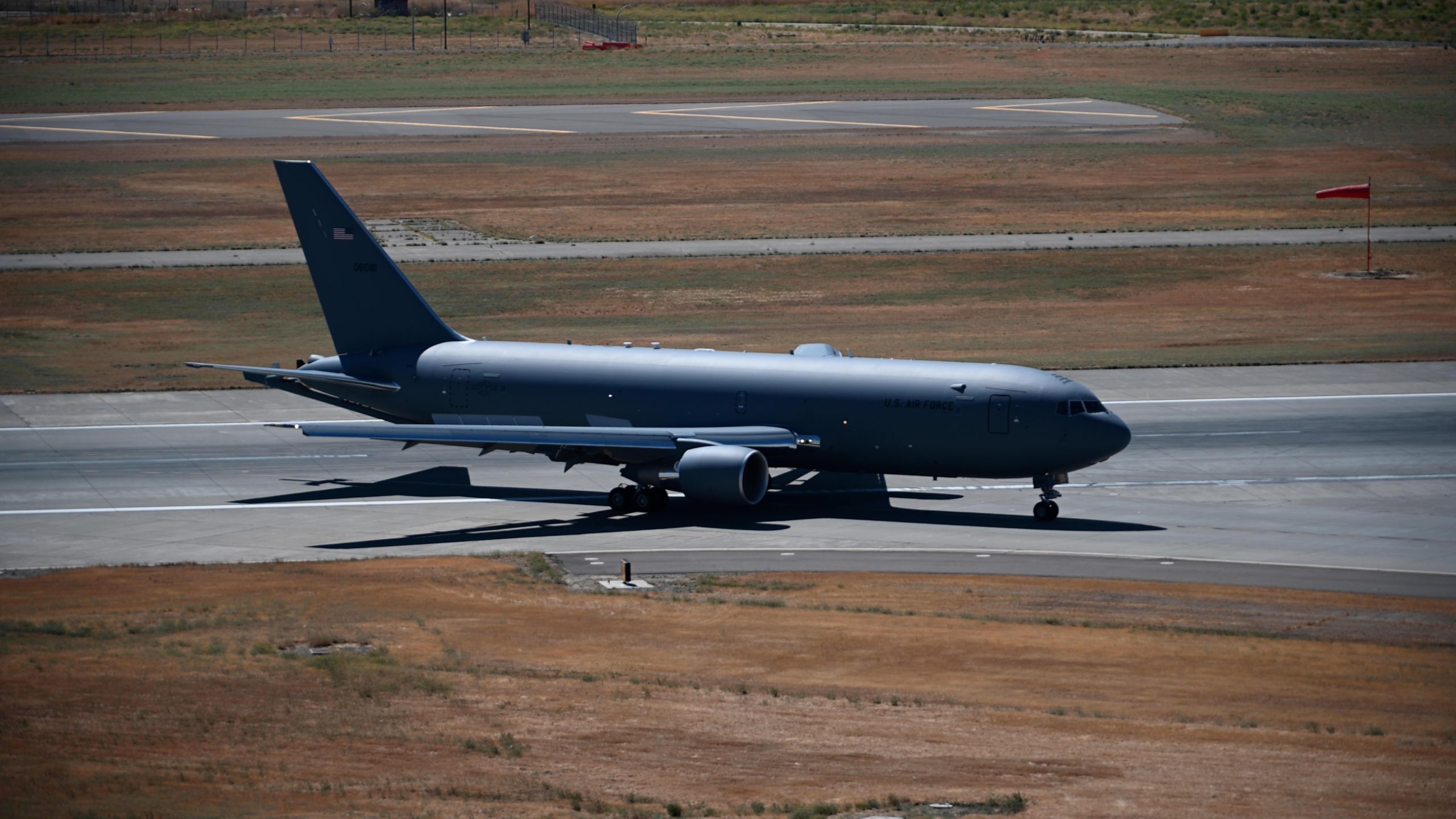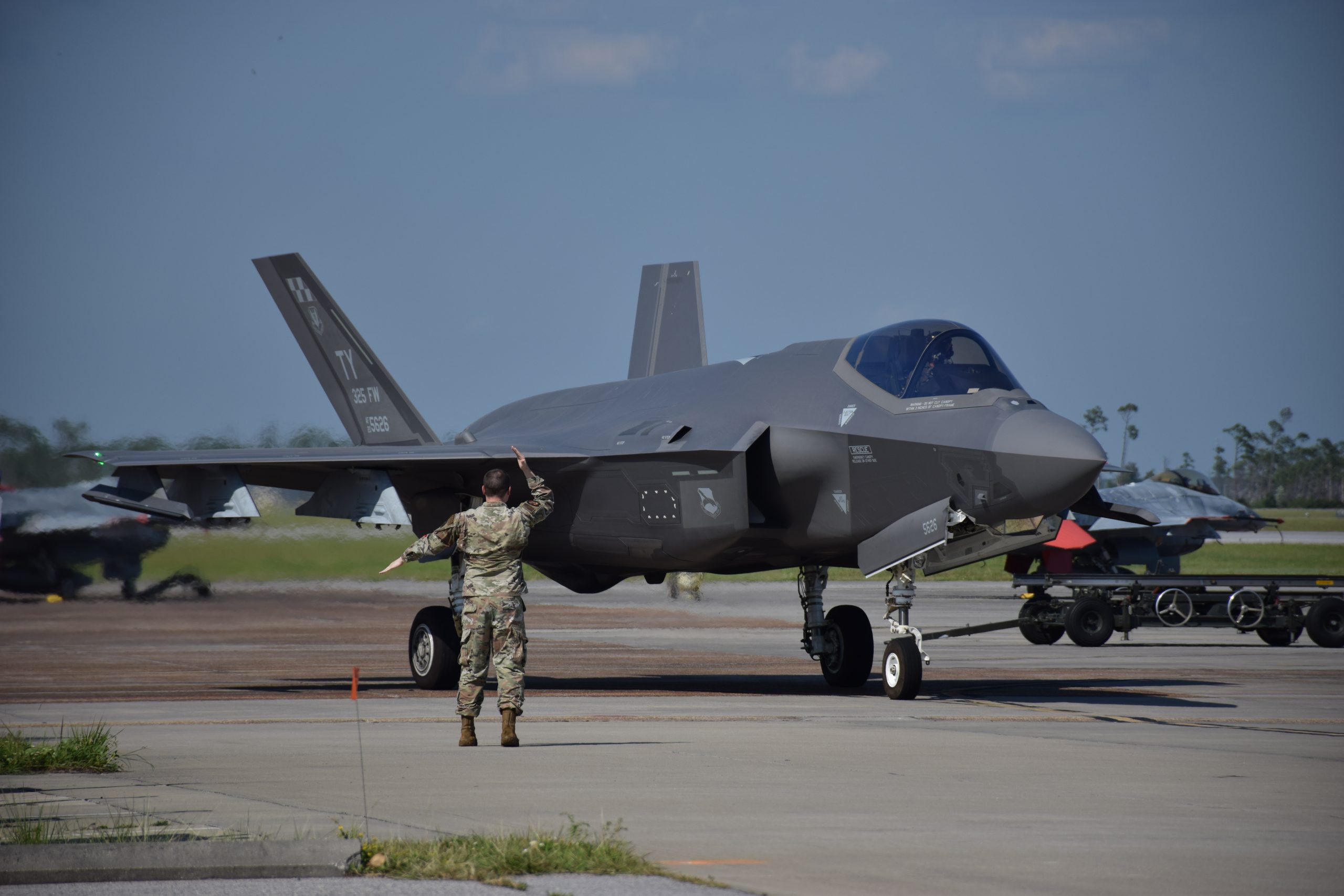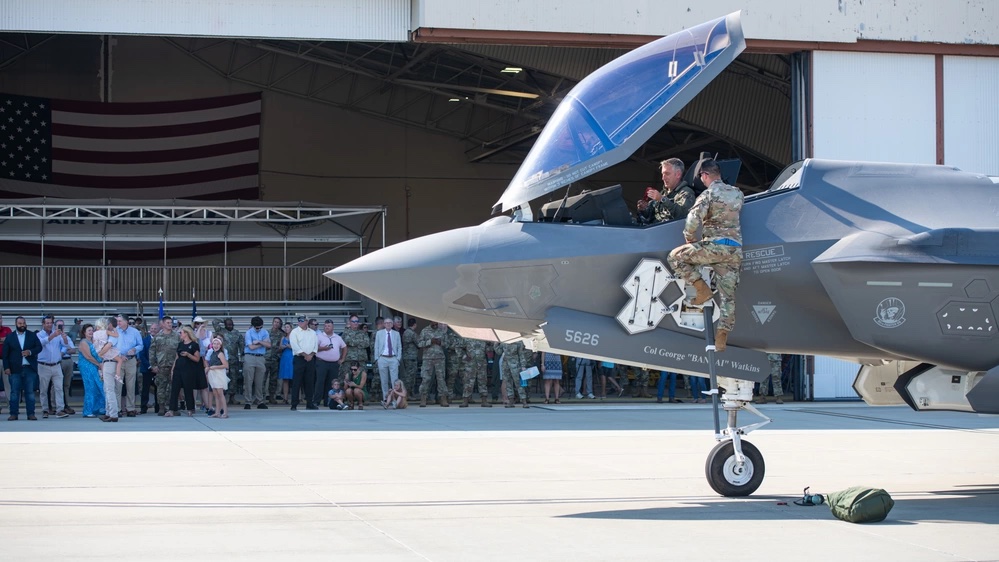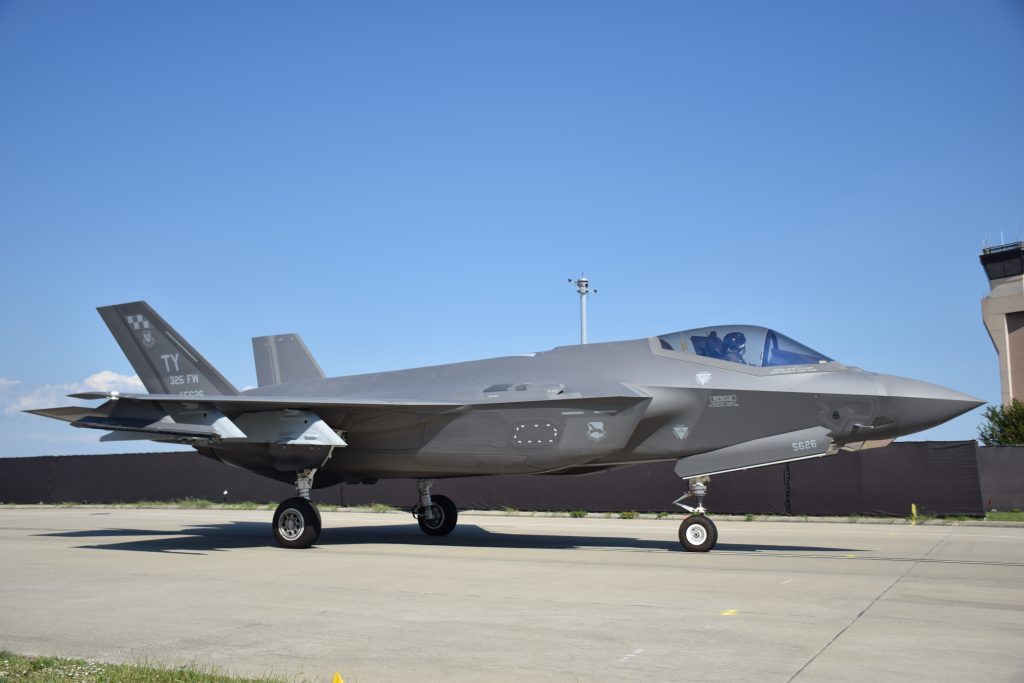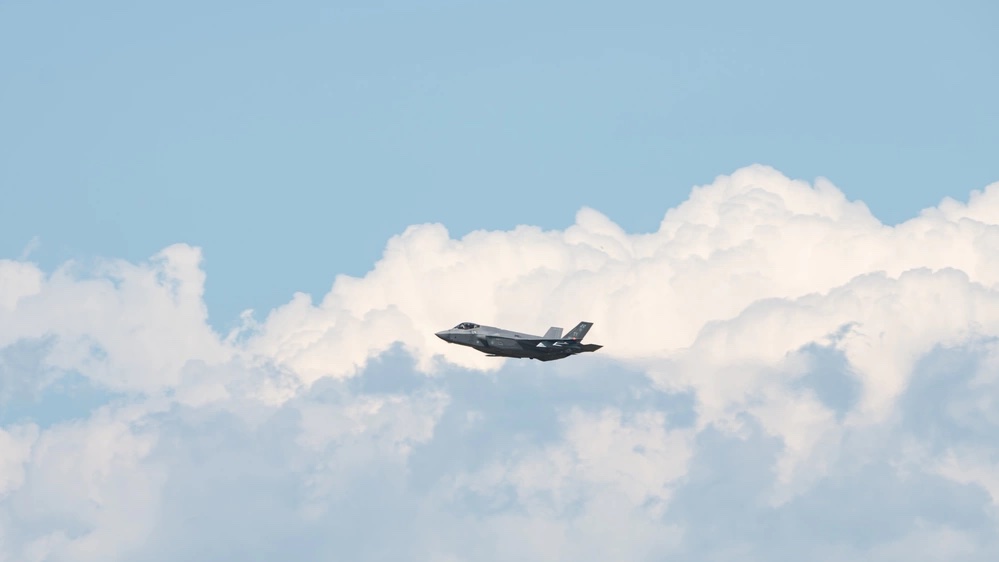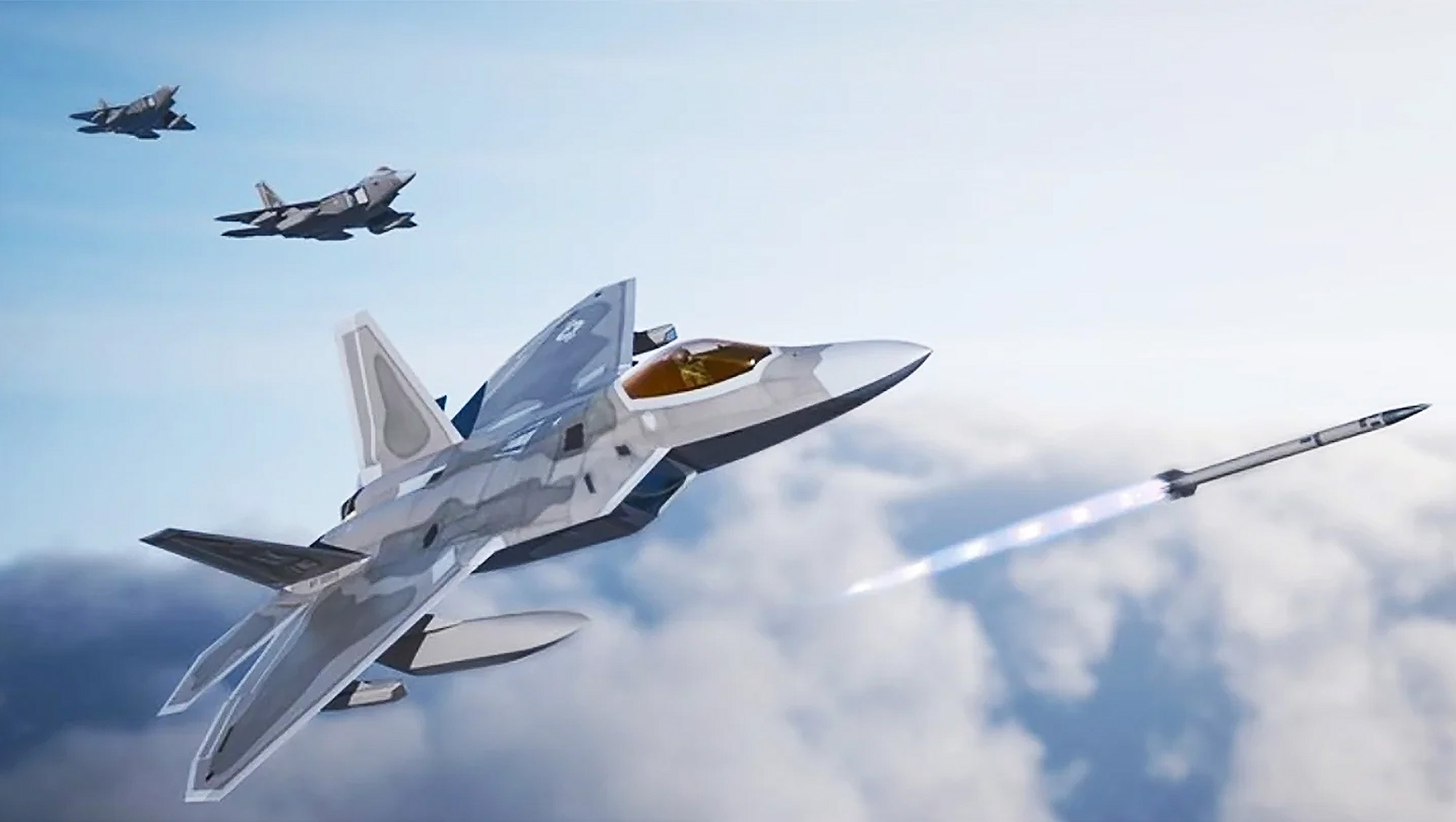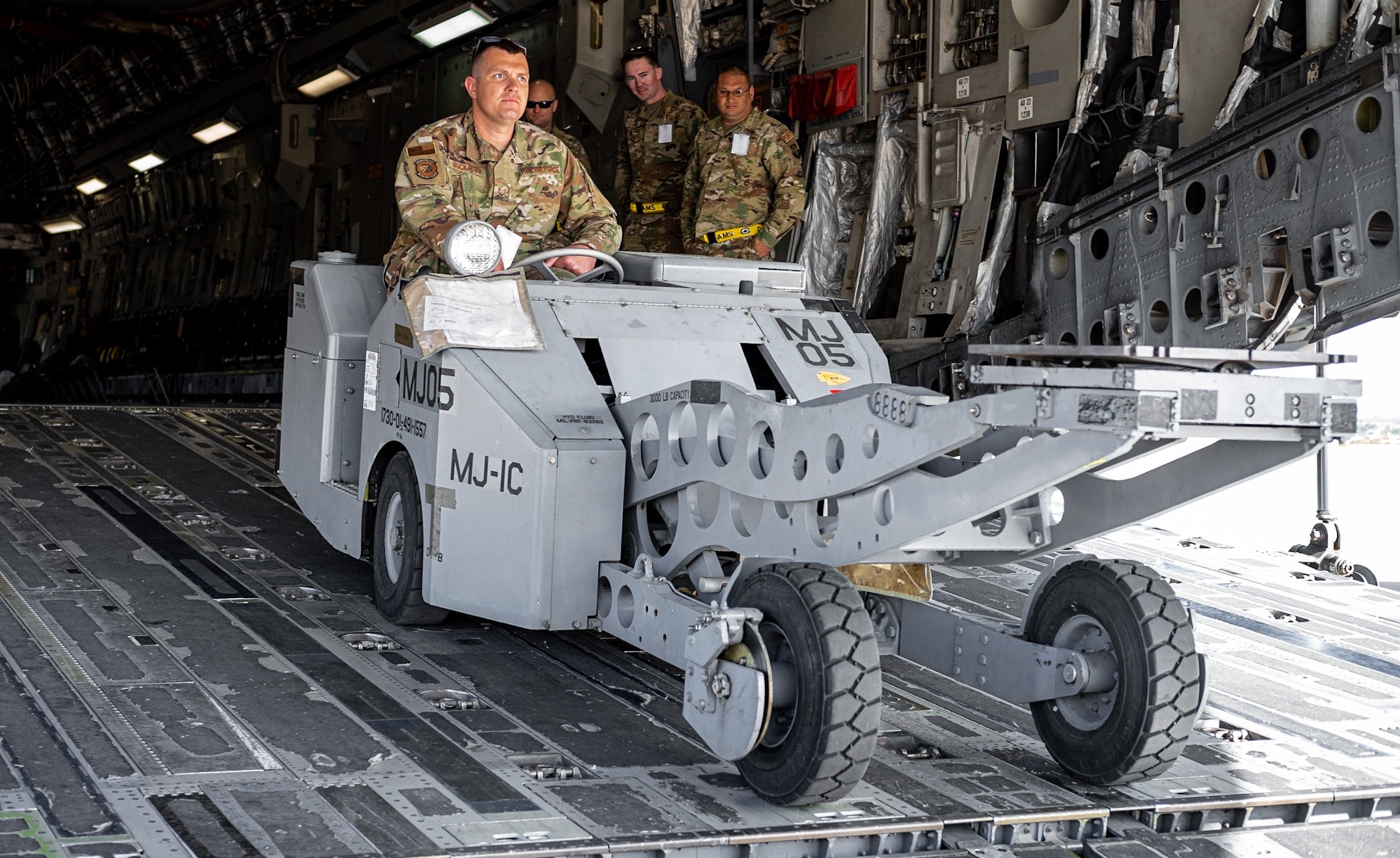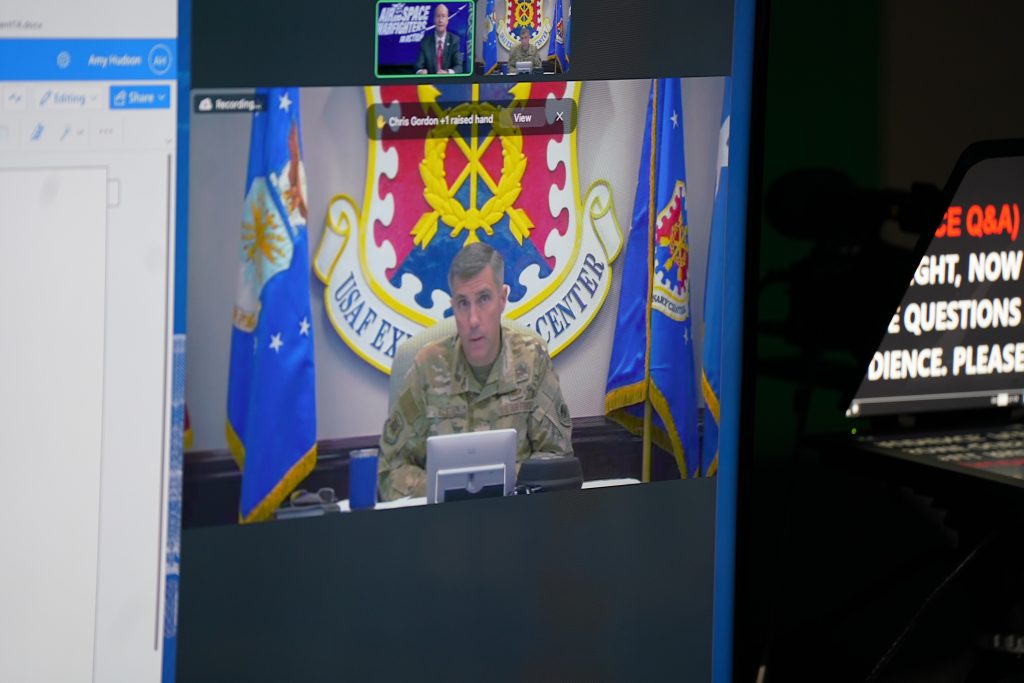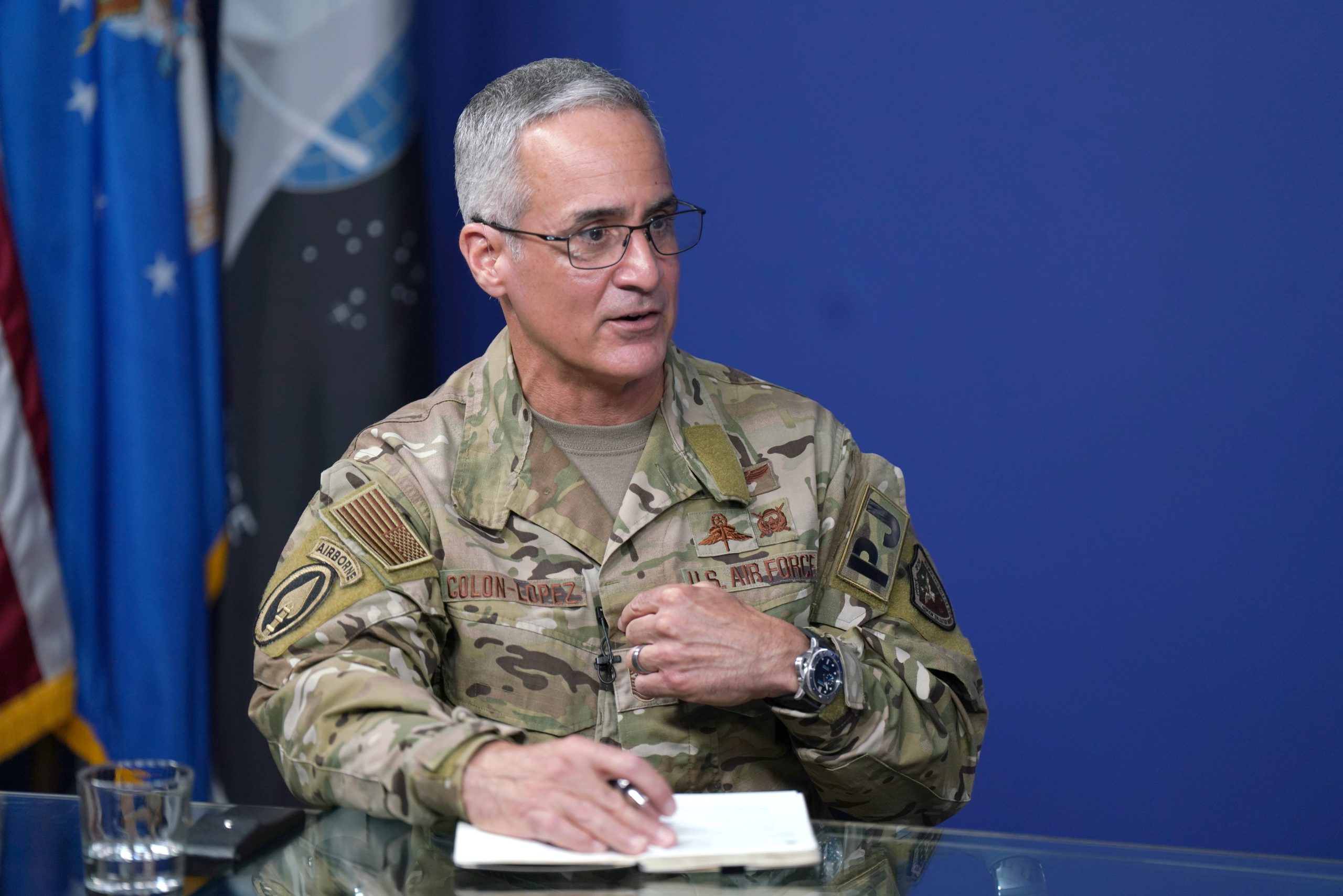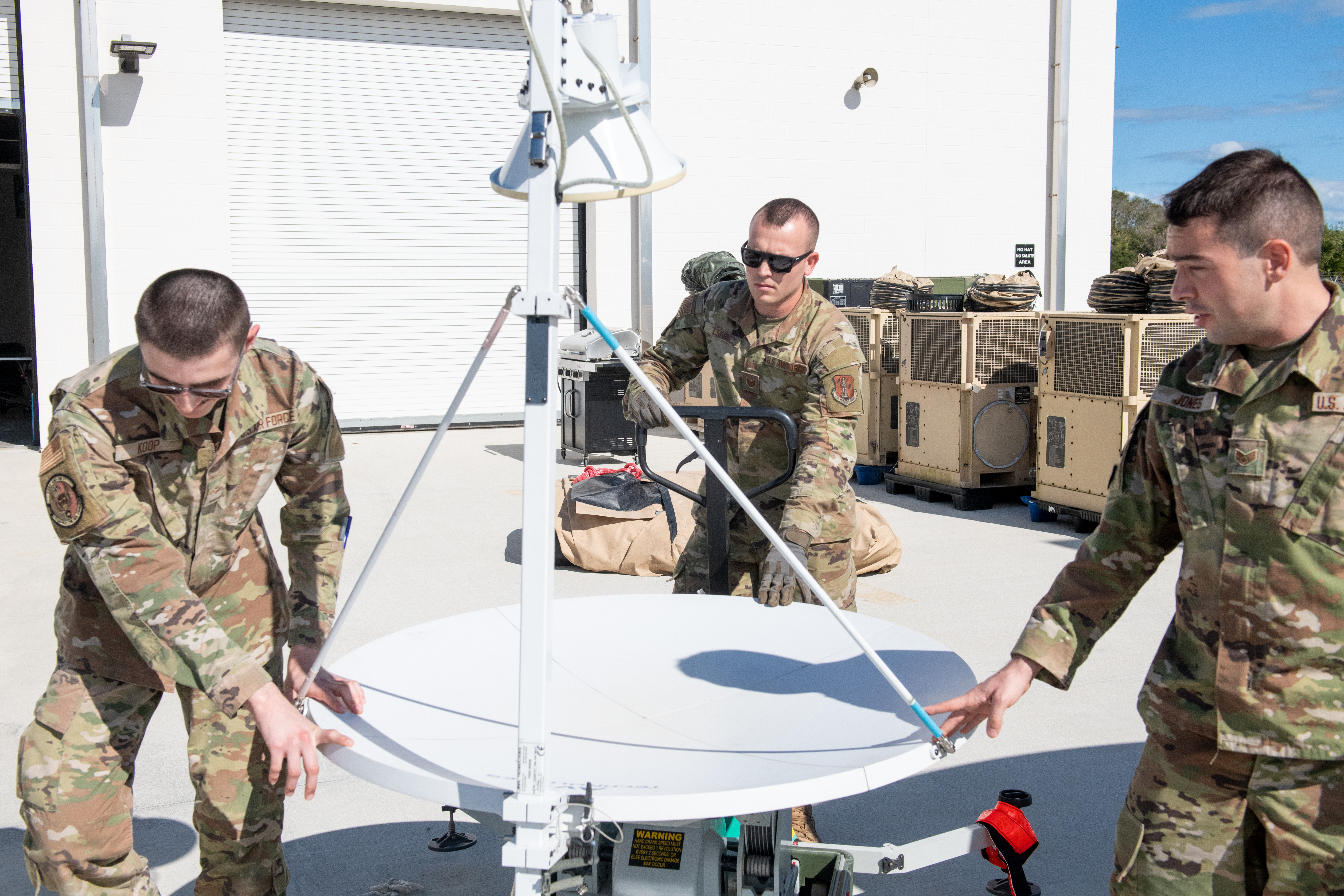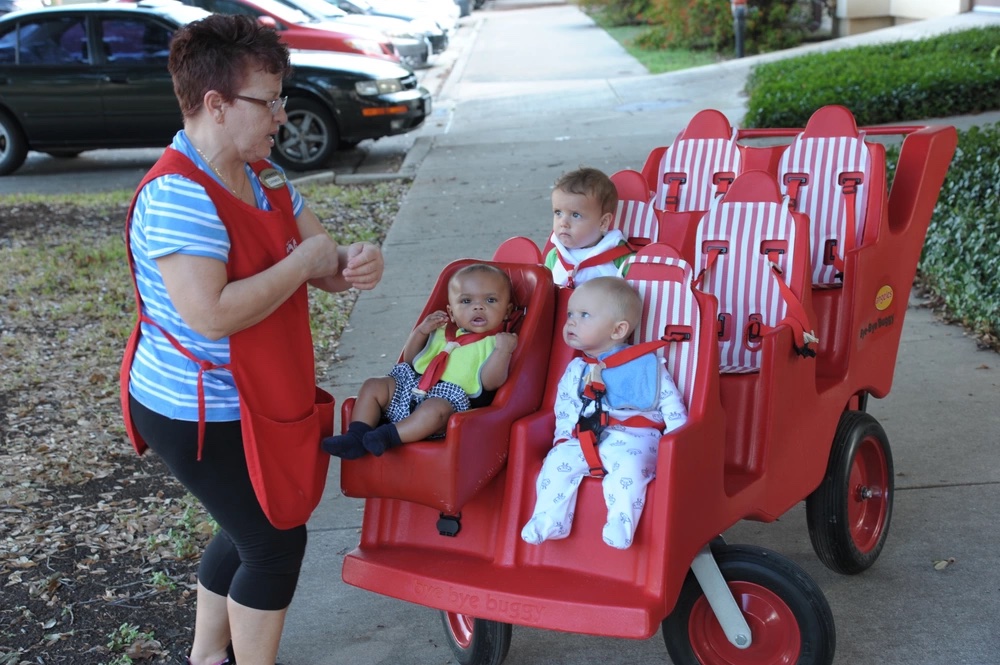The Air Force has found hazardous chemicals exceeding acceptable levels at two launch control centers at Malmstrom Air Force Base, Mont., and has ordered an immediate cleanup, according to an Air Force memo obtained by Air & Space Forces Magazine.
The Aug. 4 memo summarizes the results of air and swipe environmental testing that was done as part of the Missile Community Cancer Study and written by Col. Tory Woodard, who commands the U.S. Air Force School of Aerospace Medicine (USAFSAM).
One of the purposes of testing was to search for polychlorinated biphenyls (PCBs) in some LCCs, the underground bunkers where missileers work in 24-48 hour shifts, and in other facilities.
PCBs are “probable human carcinogens” according to the Environmental Protection Agency, which adds that they “have been demonstrated to cause a variety of adverse health effects.”
Not all of the samples have raised alarms. Three hundred air and swipe samples were taken at Malmstrom’s Launch Control Centers and Missile Alert Facilities and 279 of these yielded “non-detectable results,” an AFGSC spokesman said. No PCBs were detected in any of the air samples.
Two launch control centers appear problematic. Of the 40 swipe samples taken there, 11 contained PCBs. Nine of those samples were below acceptable levels. Two of those samples were above acceptable levels, prompting the Air Force to take immediate action.
“Based on the initial results from the survey team, which discovered PCB levels above the cleanup threshold designated by law in two of our facilities, I directed 20th Air Force to take immediate measures to begin the clean up process for the affected facilities and mitigate exposure by our Airmen and Guardians to potentially hazardous conditions,” Gen. Thomas A. Bussiere, the head of Air Force Global Strike Command, said in a statement. “These measures will stay in place until I am satisfied that we are providing our missile community with a safe and clean work environment.”
PCB production was banned in 1979, but the intercontinental ballistic missile facilities are decades old. A Global Strike Command official familiar with the study previously told Air & Space Forces Magazine the Air Force began phasing out PCBs at ICBM facilities in the 1980s.
Former missileers and other personnel have long been concerned about the risk of cancer stemming from their duties at the base. Those worries were reinforced when a presentation detailing cases of non-Hodgkin lymphoma, a blood cancer, at Malmstrom appeared online earlier this year.
Bussiere ordered a review of the issue, which led to the Missile Community Cancer Study overseen by U.S. Air Force School of Aerospace Medicine. The study has two parts: environmental sampling and an epidemiological study, which will take 12-14 months to complete, to assess cancer rates.
Members of the study team carried out initial visits in February and March at the ICBM bases to understand what they should look for and where. The Air Force’s three ICBM bases are Malmstrom Air Force Base, Mont.; F.E. Warren Air Force Base, Wyo.; and Minot Air Force Base, N.D. The ICBM silos themselves are spread out over vast fields that reach into five states.
Among the potential dangers, the study teams found stickers indicating the presence of PCBs in older electronics.
“They were broadly used across industries in electrical, heat transfer, and hydraulic equipment and can persist for long periods in the environment,” Air Force Global Strike Command said of PCBs in a statement.
Swipe tests involve gauze wetted with a solution run over surfaces and then analyzed for suspected contaminants. But PCBs are not the only concern. In addition to the air and swipe samples from Malmstrom, water and soil sampling has been done to test for radon, organic phosphates, and other hazards.
“The water and soil samples for Malmstrom and all of the test data from both F.E. Warren and Minot AFB sites have not been received and analyzed yet,” the AFGSC spokesman said. “We expect to have that data complete in a couple of months.”
The team also conducted additional testing to identify any hazardous conditions related to indoor air quality. Samples will identify if there are any harmful levels of carbon dioxide, carbon monoxide, ambient temperature, and humidity.
Officials said the planned environmental monitoring is extensive—roughly 2,000 samples per base, Woodard said in an interview in June. Environmental sampling at Malmstrom was done June 22-29 by experts from USAFSAM and Defense Centers for Public Health, according to Woodard’s Aug. 4 memo.
“Our team will work with appropriate leadership and agencies to help further investigate, advise, and assist in developing clean-up, follow-up and medical recommendations based on the above findings,” Woodard wrote of the presence of PCBs.
Woodard promised “a thorough look at all environmental and occupational hazards.”
